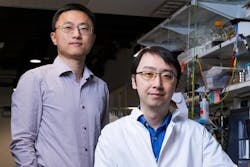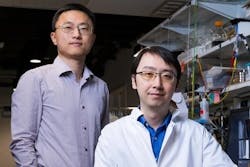Rice Engineers Design Eco-Friendly Ammonia Reactor
Rice University engineers have developed a reactor design aimed at decarbonizing ammonia production while minimizing water pollution.
Haber-Bosh is the conventional process for process to produce ammonia, the researchers note.
This involves a reaction between hydrogen and nitrogen that occurs under high-temperature and high-pressure conditions and is dependent on large-scale centralized infrastructure. The researchers focused on electrochemical synthesis as an alternative. This process involves the use of electricity to drive chemical reactions.
“Electrochemistry can occur at room temperature, is more amenable to scalable formats for different infrastructure systems and has the capacity to be powered by decentralized renewable energy,” said Feng-Yang Chen, a Rice graduate student who is the lead author on the study. “However, the current challenge for this technology is that large quantities of additive chemicals are required during the electrochemical conversion process. The reactor we developed uses recyclable ions and a three-chamber system to improve the reaction’s efficiency.”
The researchers noted that a key innovation involves the use of a porous solid electrolyte, which eliminates the need for high concentrations of supporting electrolytes — an issue that has hindered previous attempts to convert nitrates to ammonia sustainably.
Also, the use of renewable energy would essentially render ammonia production carbon neutral.
The new reactor system makes possible an electrochemical nitrate-to-ammonia conversion pathway that would eliminate the need for denitrification ⎯ the process by which wastewater treatment plants remove nitrates from contaminated water, generating nitrogen that gets fed into the Haber-Bosch process, the researchers note.
In addition to bypassing both the traditional denitrification and Haber-Bosch routes, this approach provides an effective water decontamination method.
“Nitrate is one of the priority pollutants that most frequently violates drinking water standards, and it is a is a significant concern in growing cities as farmland with nitrate-contaminated groundwater supplies is converted to urban development,” said Pedro Alvarez, the George R. Brown, professor of civil and environmental engineering at Rice.
Read the full news release at: https://news.rice.edu/news/2024/rice-built-reactor-yields-green-ammonia-and-purified-water.

